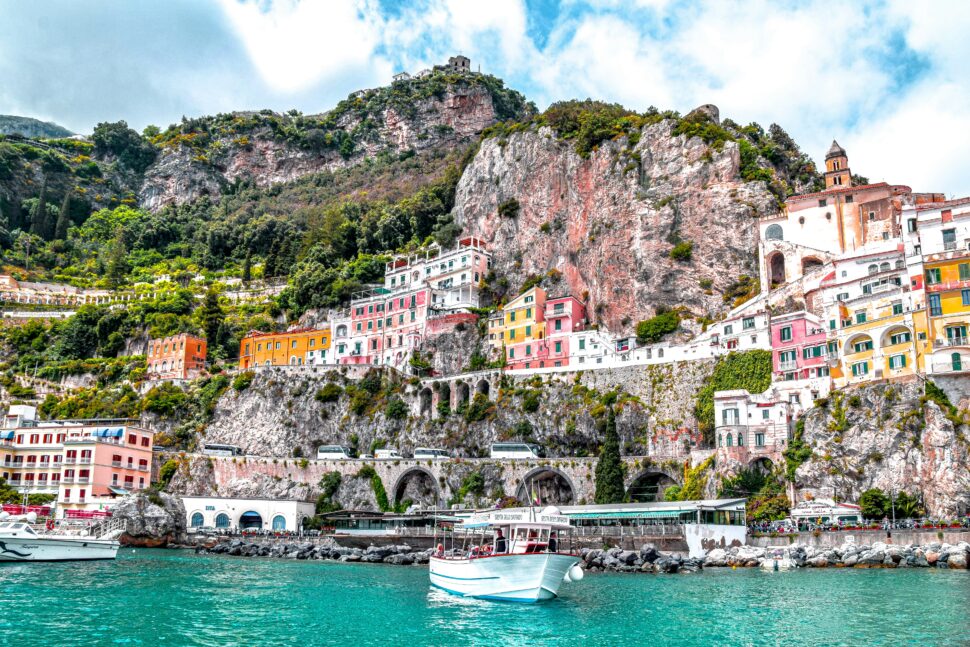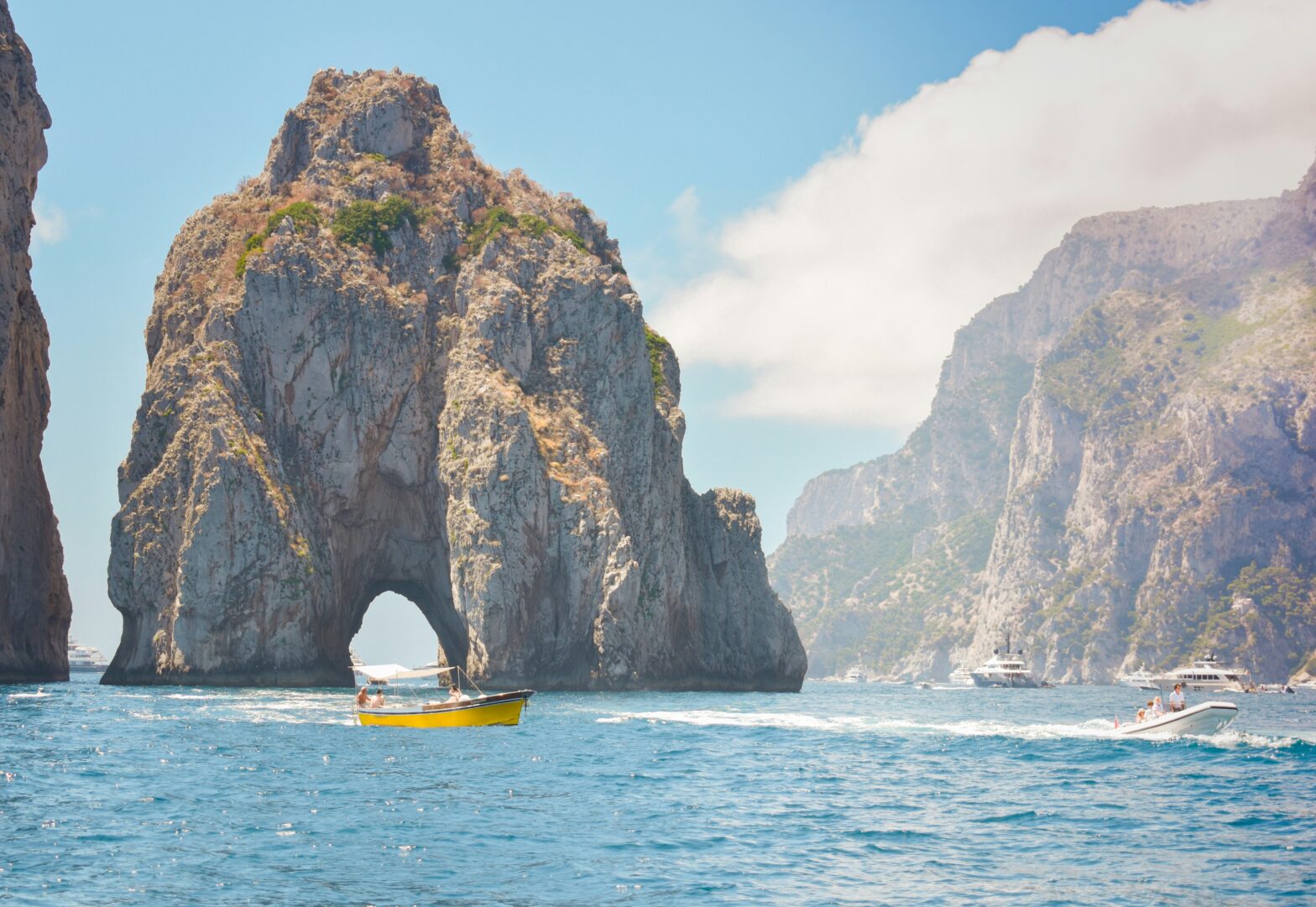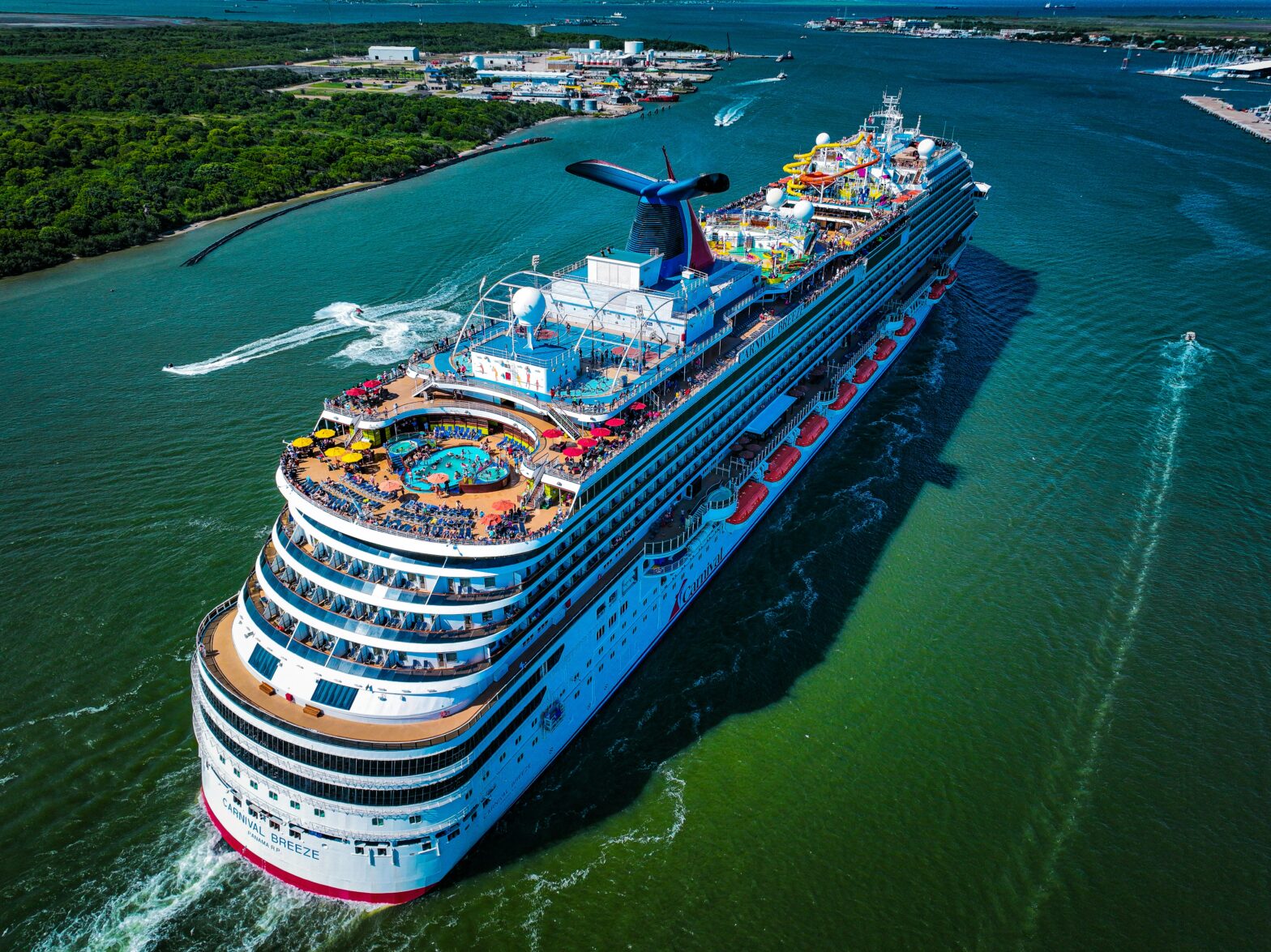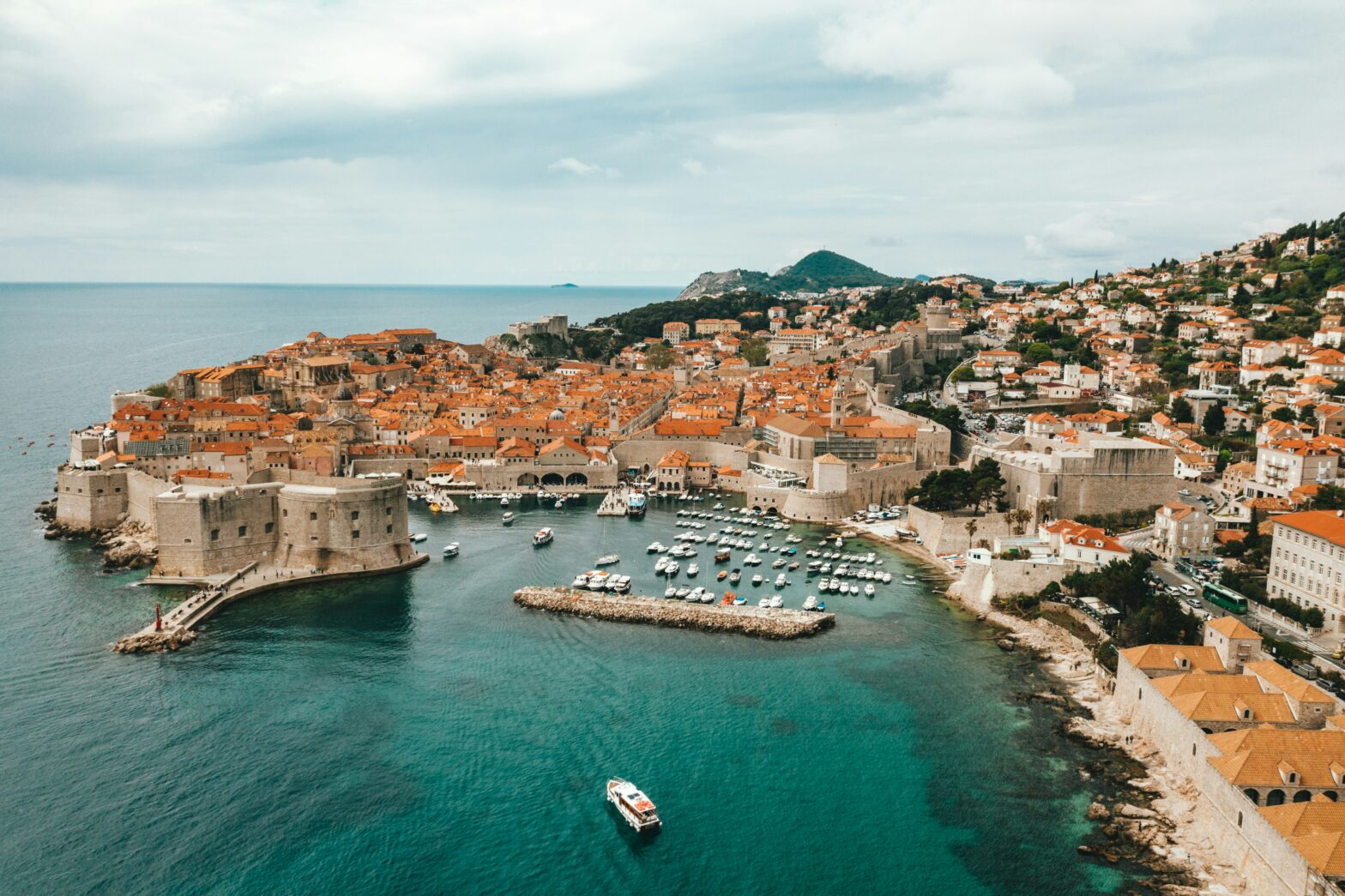If you’re a big fan of artsy A24 movies, you may have already seen trailers for Parthenope, the latest coming-of-age drama from Italian filmmaker Paolo Sorrentino. The film, which follows its title character through the streets of Naples as she discovers her sexuality and sense of self, was shot almost entirely on location in and around the South of Italy. While Celeste Dalla Porta does a wonderful job of bringing the titular character to life, the true star of the movie is the scenery, which carries evocative tones of the ancient Romans, combined with the modern feel of a lavish Italian getaway. If ever there were a film that left its viewers clamoring for a vacation, Parthenope is like a siren song among crashing waves. Luckily, we’ve got you covered, with a guide to the film’s key shooting locations, as well as a look into the best day trips, excursions and tourist sights in and around Naples.
Naples, Italy Shines in A24’s Newest Fantasy Drama
Key Scenes: Most of the film takes place in the city of Naples, as Parthenope takes in the art, culture and nightlife of the thriving metropolitan area. The Villas of Posillipo specifically stand-in for a White Lotus style resort, allowing the eponymous young woman and her peers to relax and enjoy the sand, surf and sights of the Mediterranean.
Best Time To Visit: Like many Mediterranean locales, Naples is a stunning sight to behold year round. Still, first time travelers may want to consider booking their vacation for the springtime specifically. The months of April and May offer pleasant weather, plenty of outdoor events and thinner crowds than those seen in the dead of summer. If you’re less attracted to the beach and more interested in sights like Pompeii, you could also visit in the fall, when temperatures are a bit more mild.
Transportation Options: As one of Italy’s most thriving cultural hubs, Naples offers a ton of transportation for visitors and permanent residents alike. While in town, it should be easy enough to catch buses, trains, taxis and rideshare vehicles at every major corner. Of course, if you’re looking to explore off the beaten path, you could always rent a car, though such expenses shouldn’t be necessary for first-time visitors.
Parthenope is the latest major production to film in Naples, though it’s far from the first. The Equalizer 3, Fast X, Scent of a Woman and the recent Netflix original The Children’s Train were all filmed nearby in Campania’s capital city. Since Parthenope is so new, and since it’s a bit of an under-the-radar art film, we likely won’t be seeing any official production tours around the city. Still, super-fans are more than welcome to explore Naples on a self-guided tour, in order to walk in the very footsteps of Parthenope herself. As stated, much of the movie was shot at the Villas of Posillipo, which are available to rent out for your own vacation. If you’re interested in diving into Parthenope’s iconic swimming pool, where the protagonist does some of her best thinking, you’ll want to check out a coastal villa by the name of Riva Verde. There you’ll find the historic swimming pool, carved directly into the volcanic rock and seemingly untouched by modern craftsmanship.
Fans of Parthenope filmmaker Paolo Sorrentino can also treat themselves to a boat tour affectionately nicknamed the “Sorrentino Tour,” which includes a book at San Pietro ai Due Frati, Villa Rivelli, Villa Lauro and more. These sites were all used as shooting locations within the director’s filmography. Since Sorrentino has made Naples the epicenter of his creative vision in so many films, a few local vendors have begun selling shirts with his name on them. This can effectively be seen as a thank you for bringing in so much tourism, and also offers a great photo opportunity for fans of the filmmaker’s work.
Things To Do: Whether you’re venturing out on a solo trip, a group endeavor, or a vacation for the whole family, you’ll find plenty to do in the city of Parthenope. The best place to begin is often with a walking tour of the city, showcasing some of the finer hidden gems and key tourism zones. From there, be sure to check out the base of Pompeii, Naples’ expansive underground catacombs or take a quick cooking class with some of the world’s finest pizza chefs. Naples is rich with vibrant history and incredible scenery, making it an ideal locale for just about everyone. If you’re looking to absorb some local culture, don’t miss an excursion to Museo Cappella Sansevero, which showcases paintings, sculptures and architecture dating back to the 1500s. The Galleria Borbonica is a breathtaking look at the underground portion of the city, while Museo Universitario delle Scienze e delle Arti offers a free tour of some morbid curiosities.
Where To Eat: Naples is one of those cities where you just can’t go wrong with a meal. Just by walking through the thriving downtown portion of the city you’ll find yourself tantalized by the alluring aroma of pizza, pasta, locally sourced wine and tons of fresh-caught seafood. Some of the best restaurants in town include Terrazza Rame, Chiancheria Napoli and the Michelin star-rated La Locanda Gesù Vecchio. Don’t fret if you have trouble scoring a reservation at one of these high-end eateries, however, as Naples is largely considered to be the food capital of the world to many travelers.
Where To Stay: Though Naples is a highly sought after vacation destination, the city offers surprisingly affordable hotel stays. For a cozy and authentic Italian experience, consider booking at a bed and breakfast like Starita Bed & Pizza, or an artsy lived-in environment like Hotel Piazza Bellini & Apartments. More traditional high-end accommodations include Hotel Cristina and the Decumani Hotel de Charme, which place you directly in the heart of Naples, so you won’t miss a moment of the action.
Why Is Napoli Called the City of Parthenope?

Though the film Parthenope is named after its protagonist, the city of Naples has long been nicknamed after the former Greek coastal settlement. In Greek mythology, Parthenope was a siren who washed ashore after attempting to seduce Odysseus on his journey across the golden sea. According to the legends, the siren was unspeakably gorgeous, but ultimately failed to lure Odysseus away from his trail, only because he was bound to the mast of his ship. Eventually, she washed ashore and perished on the coast, leaving citizens of the nearby beaches to call themselves the people of Parthenope.
What Does Parthenope Mean in English?
Since Parthenope is a siren, her name literally translates in English to “maiden-voiced.” In the original Greek, the name is combined from “parthenos,” meaning maiden, and “ops,” meaning voice. While official mythology doesn’t dive into the exact details of the siren’s history, it can be surmised by her beauty that Parthenope had successfully lured hundreds of sailors to their demise throughout her lifetime. Her voice is described as being heavenly, and nearly compels Odysseus to writhe loose from his ropes and lunge into the licking waves below.
Who Is Parthenope in Roman Mythology?
Obviously, the city of Naples shares a rich cultural history with both ancient Greece and the Roman empire. Like many Greek myths, this tale has its own retelling in Roman folklore, which offers a different perspective than the tale of Odysseus’ journey. In the Roman myth, Parthenope crosses paths with a centaur named Vesuvius. Vesuvius’ wandering gaze infuriates Jupiter, god of the sky, and both the centaur and the siren are punished. Jupiter turns Parthenope into the literal landmass of Naples, while Vesuvius becomes the volcano, which frequently erupts due to the centaur’s violent and wrathful nature. Parthenope is seen as a cool and calming figure to the volcano, and often attempts to water the mountain with compassion.
Parthenope has been depicted throughout centuries of art and literature, and is often associated with water. At various points in Naples’ history, there were even coins and other currency in rotation which depicted the siren. Clearly, the ancient mythology holds a special place in the history of the coastal town, as evidenced by Sorrentino’s decision to name his protagonist after the beautiful mermaid all these centuries later.





